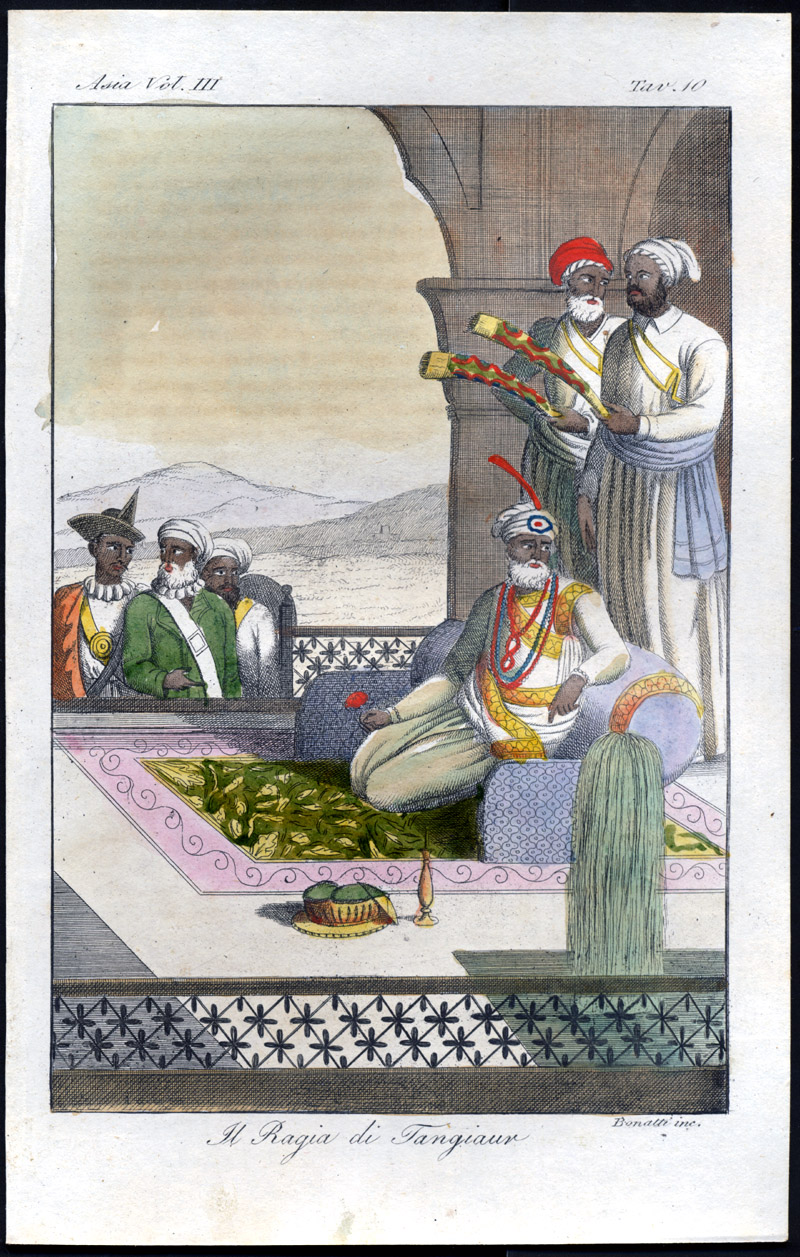

"Il Ragia di Tangiaur" by Giulio Ferrario, from 'Il Costume Antico e Moderno', in an edition of 1828
Source: ebay, June 2006
*"The prince of India visits Paris," a steel engraving from Meyer's Universum, 1853*
Source: ebay, Mar. 2006
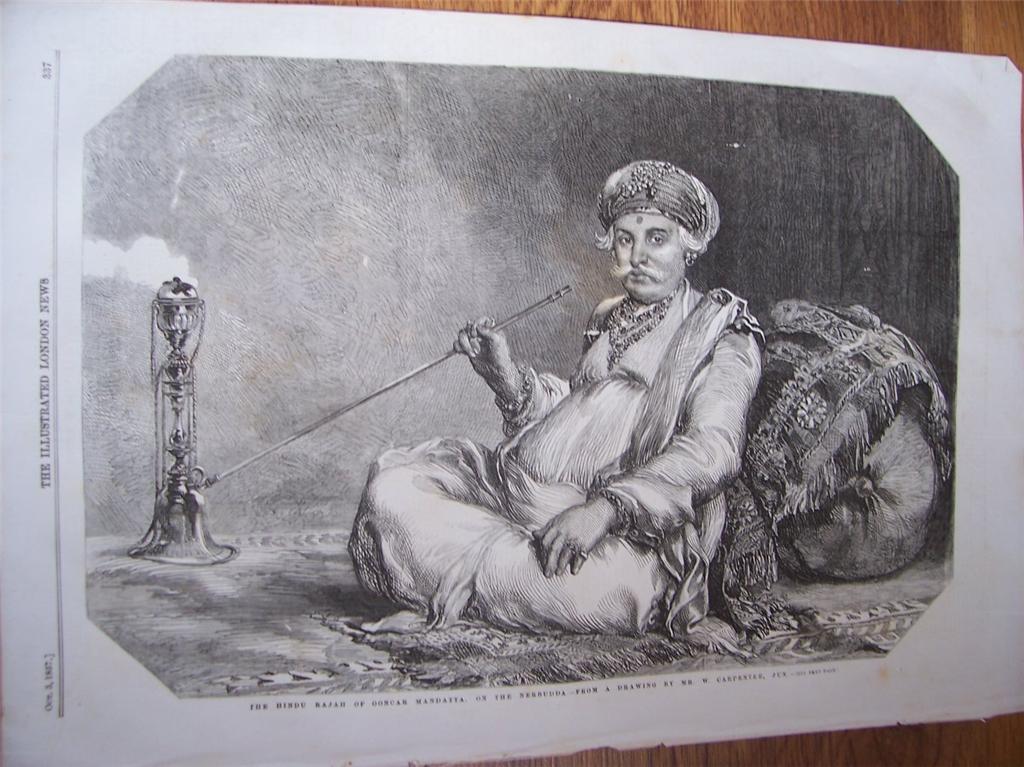
"The Hindu Rajah of Ooncar Mandatta, on the Nerbudda-- from a drawing by Mr. W. Carpenter, Jun.," from the Illustrated London News, 1857; *a very large scan of this portrait*
Source: ebay, Dec. 2001
*"The Rana of Oodipoor, from a drawing by Mr. W. Carpenter, Jun.," Illustrated London News, 1858*
Source: ebay, Oct. 2006
*The Maharana of Dholpur; from a Dutch travel book, 1874*
Source: ebay, Sept. 2006
*The Prince of Wales meets the
Maharajah of Shutterpoor; from a Dutch travel book, 1874*;
also: *his meeting with the Raja of
Bhunera*
Source: ebay, Sept. 2006
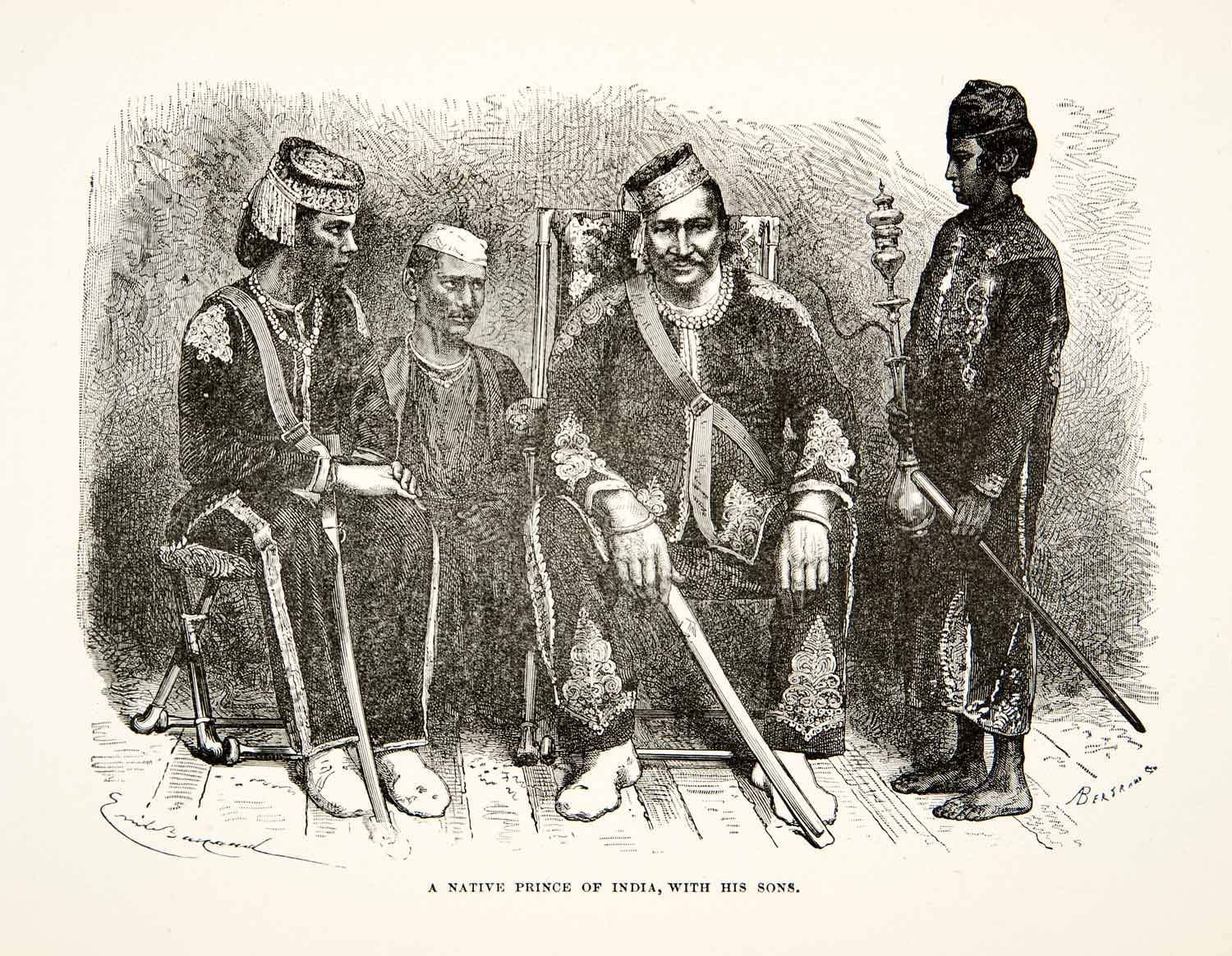
"A Native Prince of India, with his Sons," by Emil Bayard; also *"Durbar of the Maharajah of Rewah at Govindgurh," a wood engraving by E. Bayard, 1878; also *The Maharajah at Govindgurh sets out on a hunt*; also *"Courtyard of the palace of Govendgurh"*; also *"Summer palace of the Maharajah of Rewah, Govindgurh"*
Source: ebay, Dec. 2004
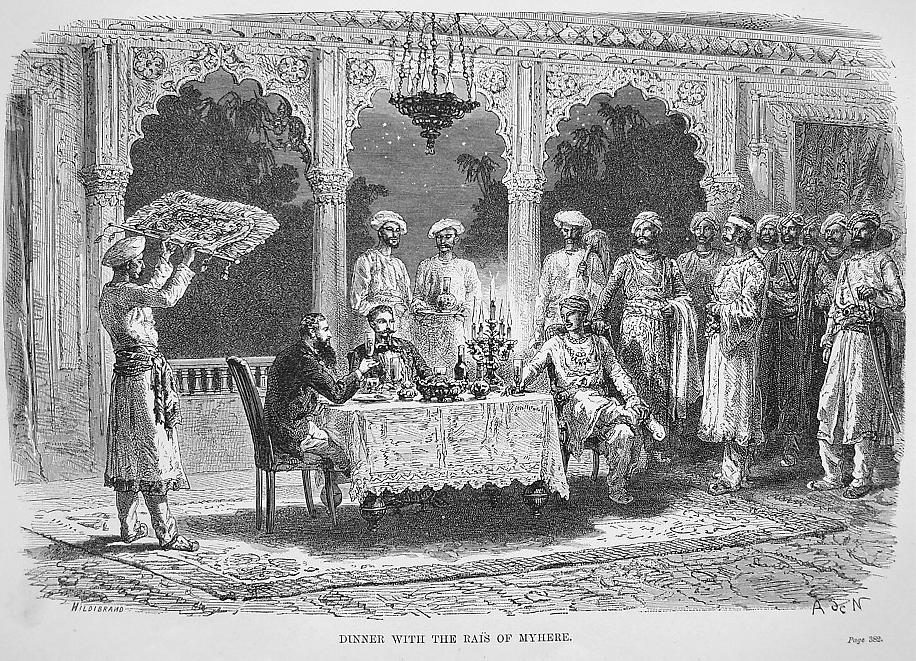
"Dinner with the Rais of Myhere," a wood engraving from the 1870's by Hildibrand; *a very large scan of this engraving*
Source: ebay, Aug. 2005
*"Durbar of the Maharajah of
Dholepore," from 'India and its Native Princes' by Louis
Rousselet, 1878*; also
*"Bagwan Sing, Maharaj Rana of
Dholepore"*; also
*"The
Maharao Jajah of Ulwur"*; also *"State of Chutterpore: The Indian
Silenus"*; also *"Sambhoo Sing,
the Maharana of Meywar"*
*"Gentlemen of Bihar," a wood engraving, 1878*
Source: ebay, June 2007
Source: ebay, Dec. 2005
Source: ebay, May 2007
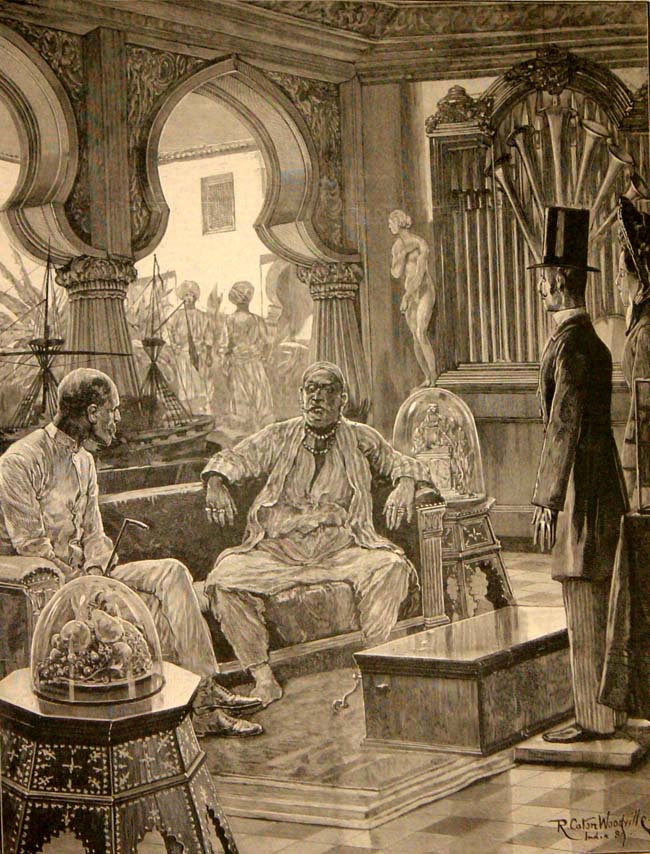
"Visit to an Indian Nawab," by R. Caton Woodville, Illustrated London News, 1891; *a very large scan of this engraving*
Source: ebay, Sept. 2004
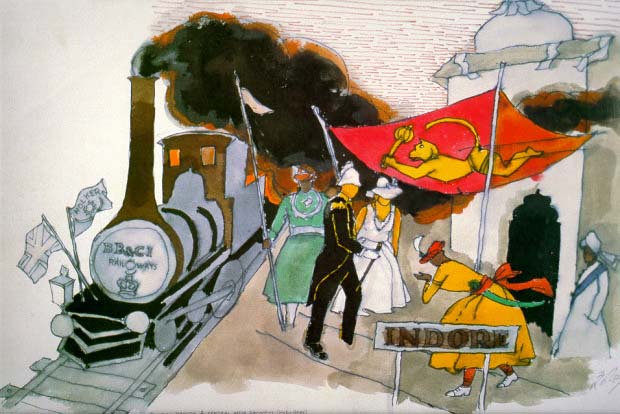
"Lord and Lady Received by His Highness Maharaja Holker" by M. F. Husain , 1986?
Source: http://www.asianart.com/articles/husain/index.html
(downloaded Nov. 1999)
Analysis by Shyamal Bagchee:
"In "Lord and Lady Received by His Highness Maharaja Holker" (1986?), Husain presents the encounter (of themes and of styles) most eloquently and economically. Yet the eloquence is Husain's alone; for the principals--the Indian Maharaja and the English "Lord" (and his "Lady") the cultural encounter is fraught with incomprehension and miscues. The locomotive of the train that has brought the English governor to the Indian state flies two flags--one bearing the Holker insignia, the is the Union Jack. The flags have equal prominence, rather they are equally muted. The Maharaja bows deeply in receiving his "guests" who have just stepped on to the platform. But while it is possible to read this as a gesture of submission, it is just as reasonable to see in it a traditional sign of hospitality. The gloved hand of the Englishman, extended for a handshake, remains untaken. At the same time the "Sahib's" extended hand also holds a short staff signifying ambiguous power relationship between the guest and the host. On the left of the picture is the locomotive spewing black smoke tinged with a threatening orange glow. The railway system is prosaically identified twice in the picture: by the letters B.B. & C.I. on the engine, and by the painter's legend at the bottom (but within the pictured area--"Bombay Baroda & Central India Railways (Metre Gage [sic]"). The railway station is Indore, as the sign in the foreground says; and the alternate title of the picture declares in the painter's personal voice: "My Childhood Railway Station, Indore." On the right, countering the darkness of the engine and its smoke, is the white facade and ornamental archway into an Islamic building; it is probably a mosque, dominating the railway station of a Hindu kingdom. But the trident on the top of this structure may also suggest that it is a Hindu temple. The English governor is stiffly dressed in a formal dark suit with a decorative, and emblematic, epaulette". -- Analysis by Shyamal Bagchee (http://www.asianart.com/articles/husain/index.html)
== Indian Routes index == Indian Routes sitemap == Glossary == FWP's main page ==